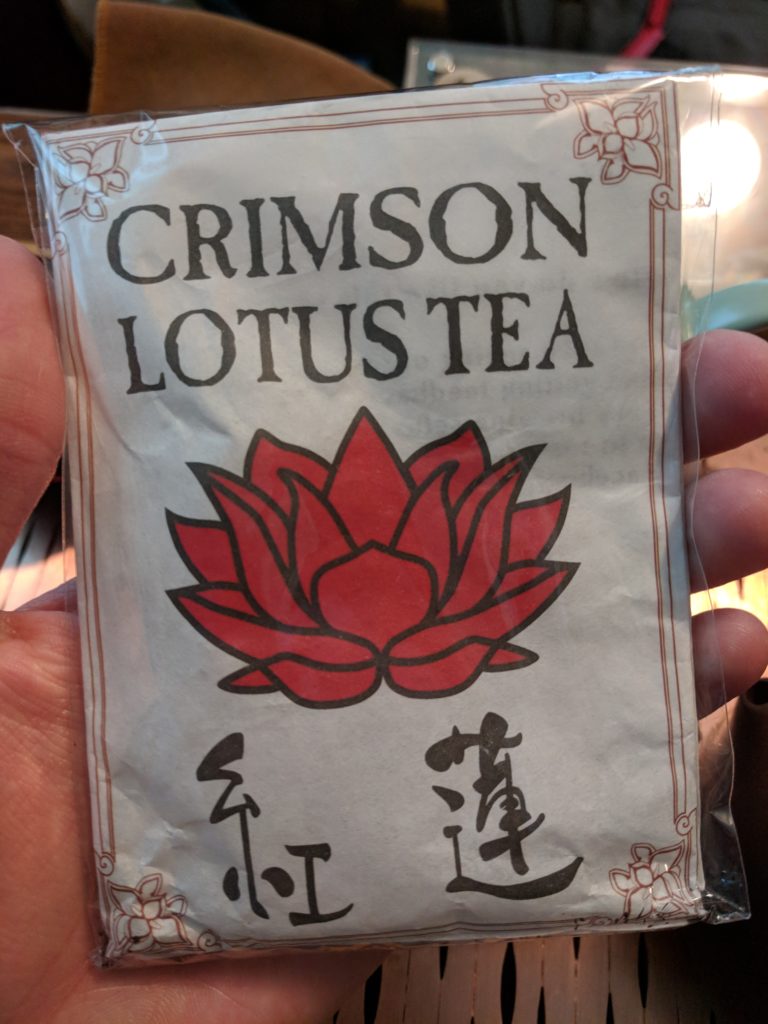
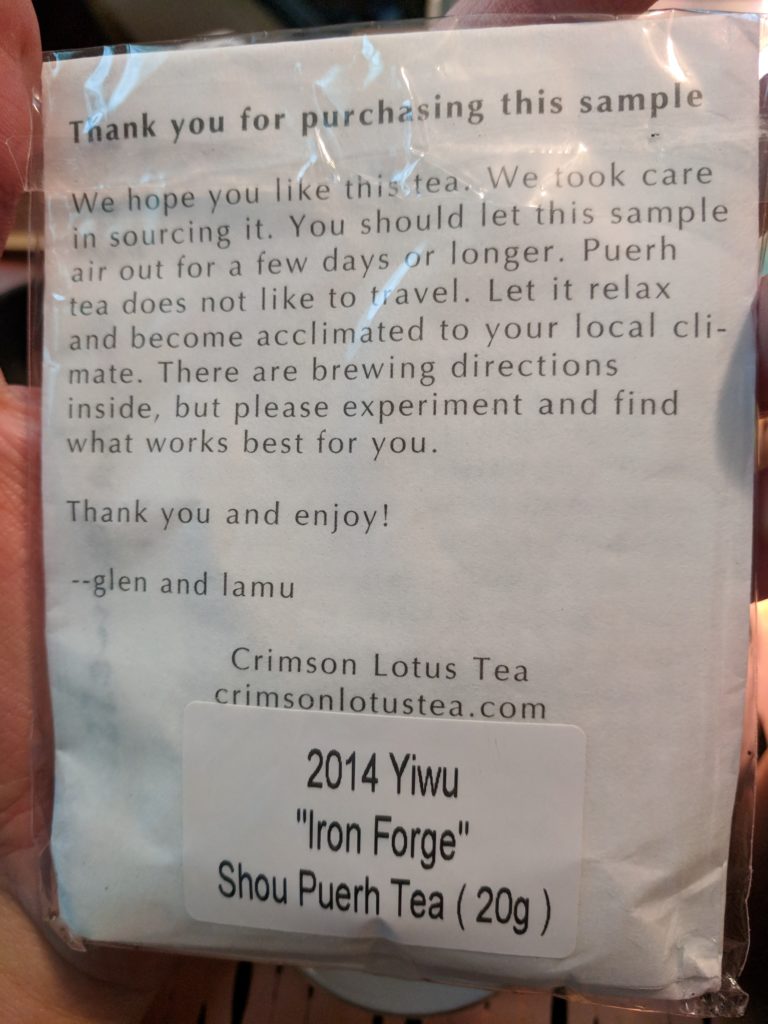
| Leaf | 10g |
| Temperature | 210°F |
| Water | 150-200ml |
| Time | 10sec |
| Infusions | 7 |


Iron Forge is a Shou Puerh by Crimson Lotus. A unique aspect of this specific puerh is that it is made using Huang Pian. For a much better explanation of what this is, see Crimson Lotus’ post about it here. A quick and dirty explanation is that these are the larger, older, and usually slightly uglier (after processing) leaves that are usually kept by farmers instead of being sold to customers. As a result, when sold, the tea produced from these teas tends to be a bit cheaper than other similar teas. I was drinking a sample of this, but you can get a 250g brick of this for only $29!
Since this is a shou/ripe puerh, it has gone through a fermentation process that typically gives it a smooth and thicker body. It’s worth noting that the aging/fermenting process for shou puerh involves “wet piling” that speeds up the process and changes the flavors significantly. At some point I may do a post specifically on the differences between shou and sheng puerh, but at this point… I’m probably not versed enough in the differences to speak with any great accuracy!
Crimson Lotus describe this tea as “mellow and smooth” which I would tend to agree with, but I had some other very specific notes that I think are worth mentioning.
I didn’t get any specific scents from the dry leaf, and since I only bought the 20g sample, I didn’t have to break it apart from a brick. I did use my puerh spike to split apart the 10g piece I had (I already tried 10g a few days earlier), and it required basically no pressure to split. The piece of cake flaked apart, and didn’t seem to be compressed very tightly. I’m not certain if the full brick would be this flaky, but I imagine it wouldn’t be that much different. I really like this, since some of the super compressed teas take FOREVER to come apart, and early infusions aren’t as good (in my opinion).
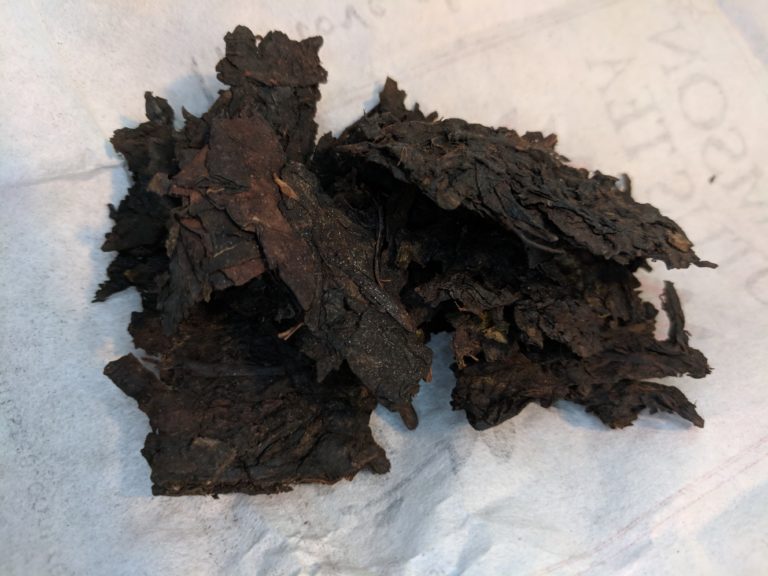
I did a quick 10sec wash before doing any infusions. Since the leaf had already flaked apart so easily, it fully separated in the first wash. This was really nice and made me feel like I’d be getting a nice and strong first infusion. After this wash, I did take a nice smell of the wet leaf. It had a strong smell of fresh paper with some hints of bread and maybe some chocolate. The paper smell was definitely the strongest. There are obvious scents that come with every puerh I’ve had (wet leaf has a very particular scent in my opinion). The chocolate was more of an “afterscent” if you could call it that… basically something that I didn’t smell in my initial inhale; but as I kind of took the scent in, there were chocolatey notes to it.
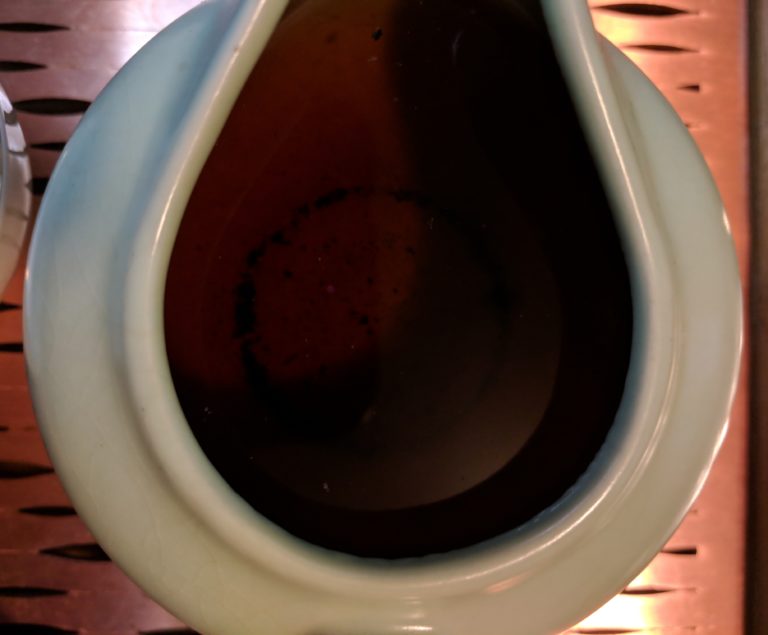
The overall color was a red-brown and pretty dark. The darkness stayed until later infusions; but the redness became much duller, even with the first infusion. I think this color is very typical for a shou puerh, although, maybe a bit darker?
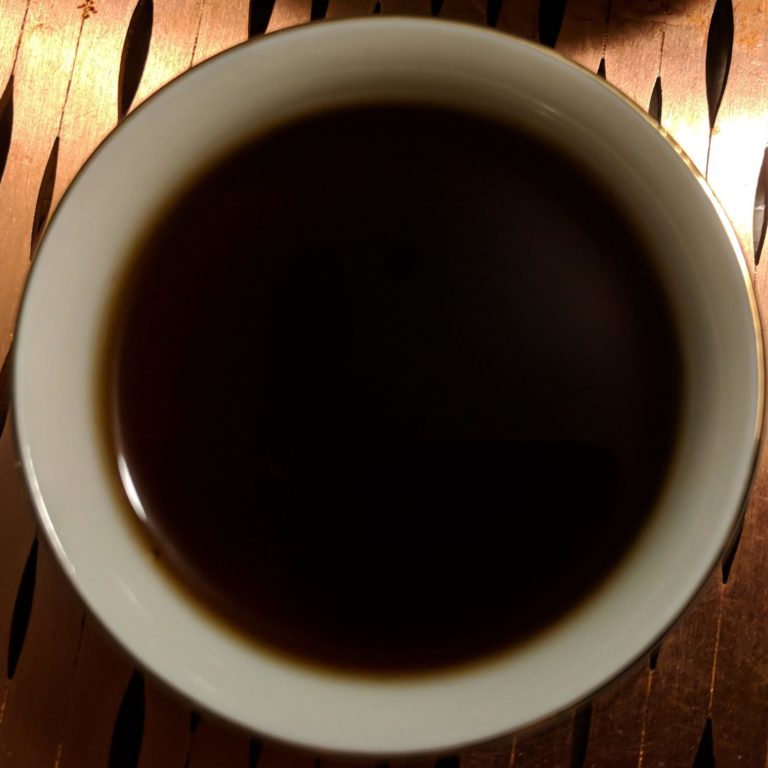
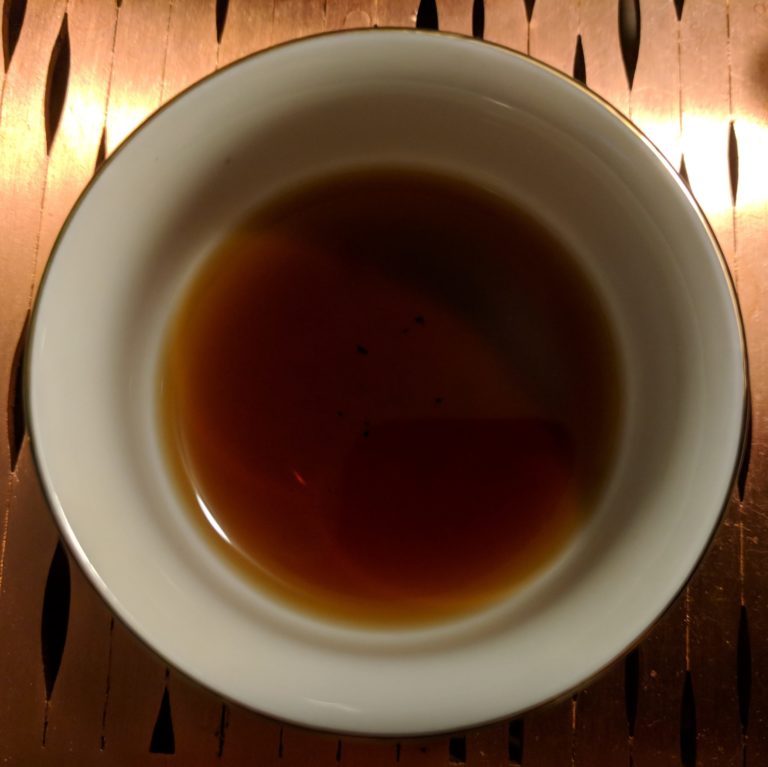
The first infusion was another 10sec or so, and was very similar in appearance to the first wash. The taste was not at all what I was expecting. The first thing that immediately hit me were notes of black pepper. It was this slight spiced flavor, and maybe a bit of astringency felt towards the middle of my tongue, that left a very lasting impression of this tea in my mind. In my initial taste of the tea a few days prior, I immediately noticed the same peppery notes; but had left a few days between that (and a few other teas) to kind of revisit it and make sure that I was actually tasting it correctly and it wasn’t something else that I had eaten that day. This peppery taste was very good, but definitely not the only thing I tasted and not the flavor that stuck around. After the notes of pepper, I began to notice the more typical woodsy and wet forest flavors. There were definitely woody and smokey notes, but they were not super strong. There was also a sweetness that I would compare to chocolate or burnt campfire marshmallows. It wasn’t overly sweet, but noticeable towards the end and in the aftertaste.
There was only a bit of a kind of “lasting” mouthfeel, but overall it was more of a clean/crisp feeling left after drinking. While the tea was definitely smooth and thick like I would expect from a shou, it didn’t leave the typical “coating” I get from some shou. Second to Fourth Infusions
I did 10-15sec infusions for the second to fourth infusions. I typically increase time by ~5sec each infusion, then stick at ~30sec infusions for late infusions. By my fourth infusion, I was at about 15sec. Overall, the taste was very woody and smokey with a slight chocolatey aftertaste. It wasn’t overly sweet, or bitter like super dark chocolate; but definitely not the same “burnt marshmallow” sweetness from the first infusion. This was closer to the typical shou flavor, with a very woodsy camping feeling to it. It was a bit more mellow with less of the peppery taste that I had in the first infusion. The peppery taste was still there, but definitely not as strong.
Overall, I felt like the color seemed darker, but that was likely due to the leaves opening fully and the slightly longer infusions. It had a very dark brown color, with less of the redness that I saw in the first infusion.
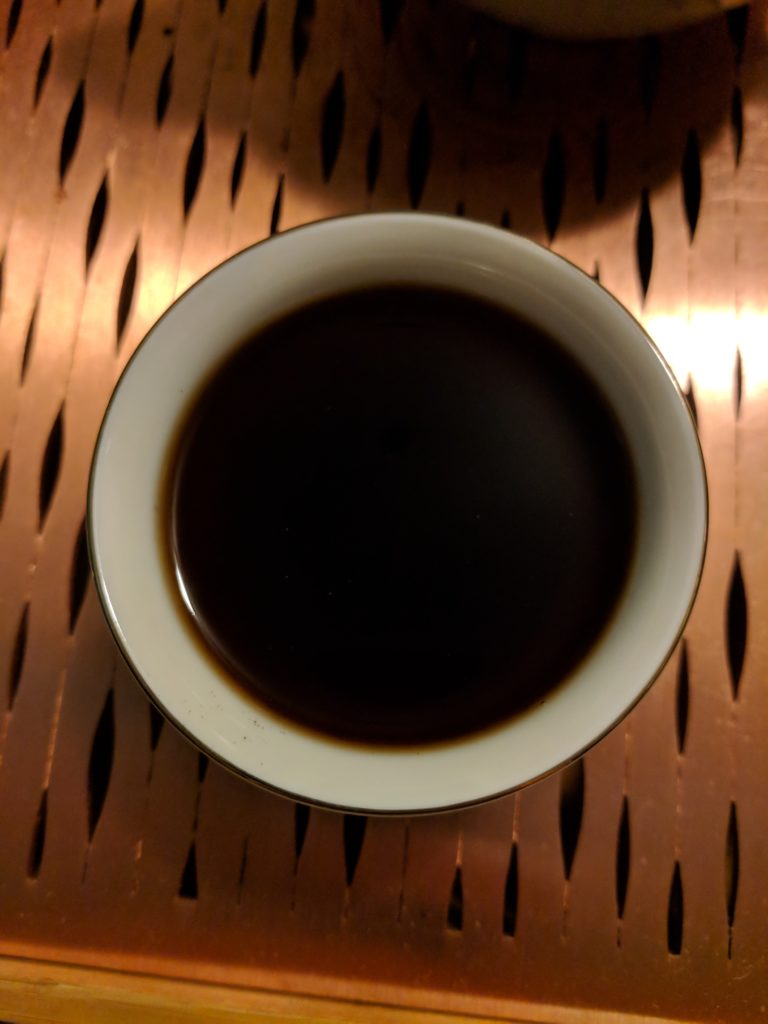
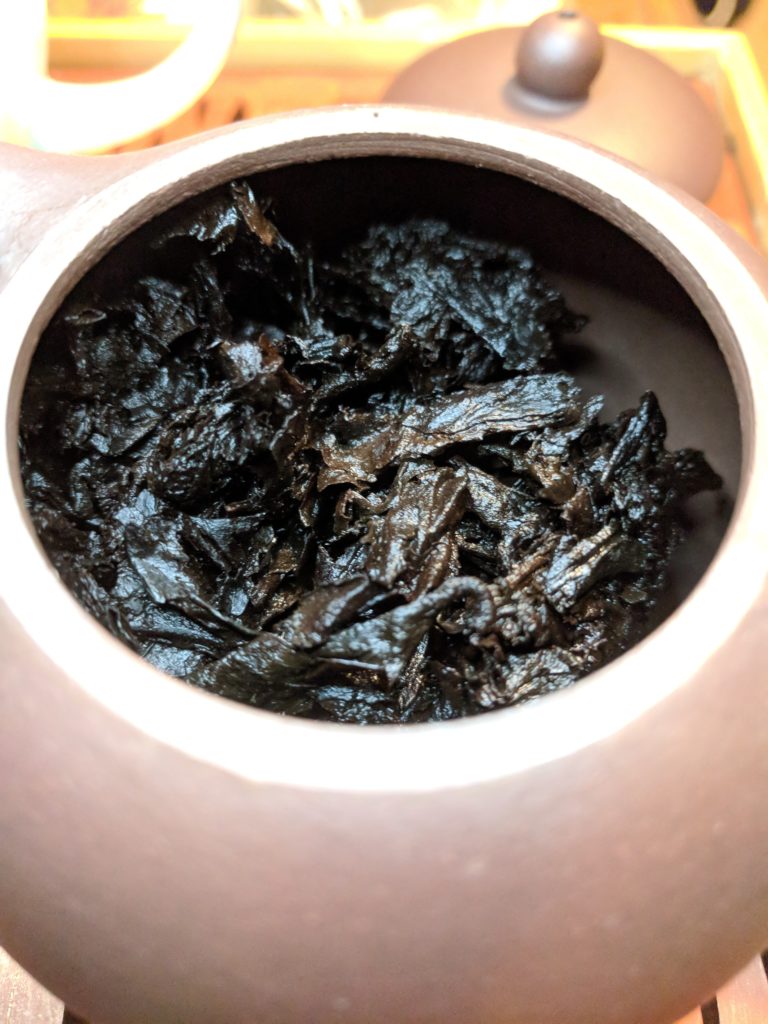
The wet and woodsy flavors were a bit more intense in the third and fourth infusions, and some of the smokey and peppery flavor went away. It also seemed like the sweetness increased by the fourth infusion (maybe just due to the other flavors becoming more muted). I would also say that by the fourth infusion, nearly all smokiness was gone and it had an overall slightly thinner mouthfeel. There was also a bit of a slight bitterness/astringency in the back of the mouth.
Partially because I started doing something else, and partially because this is something I typically do with tea, I let the second half of my fourth infusion cool down to room temperature. I personally have no reason for this (scientific, based on a specific way to taste tea), its just something I’ve typically done. It does tend to give you a different taste of the tea. For me, it kind of seemed to bring back the more chocolatey notes. A good bready, oaty taste. It was actually very good and refreshing. Sometimes when I do this, I fall back to the more smokey flavors, and its not that great. This one was very good.
By these later infusions, I was steeping 20-30sec. These longer steeps seemed to bring back some of the more peppery notes, and a longer lasting clean paper taste. The wet and woodsy taste definitely became more muted and was barely noticeable. By the sixth and seventh infusions, there was an overall weakening of the flavor. I expected this, and this is part of the reason I only got to seven infusions (but also partially because I was drinking at 11pm!).
The color was much lighter, and I could start to see the bottom of my cup much more easily; even with a full cup. The darkness had faded with the flavor.
Overall, I would highly recommend this tea. The peppery notes are nice, and would be REALLY nice on a cold Fall/Winter night. Even though its slightly cheaper than some tea, the Huang Pian is very good. This would be a great daily drinker in the colder months!